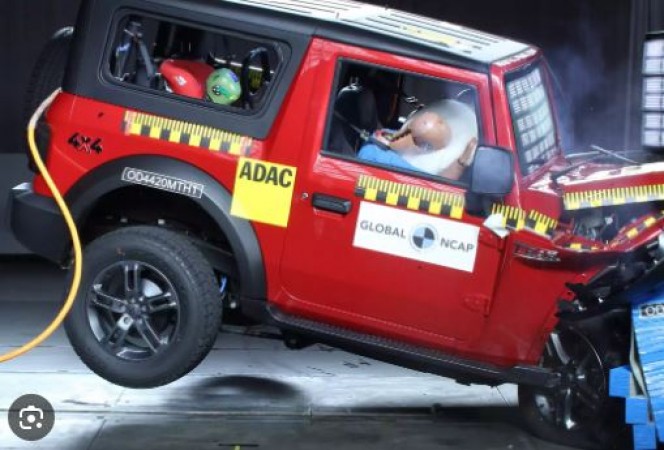
Road safety has been a critical concern for countries worldwide, and India is no exception. With the ever-increasing number of vehicles on the road, ensuring the safety of drivers, passengers, and pedestrians has become paramount. To address this issue, India has introduced the Bharat New Car Assessment Programme (Bharat NCAP), a comprehensive safety protocol aimed at enhancing vehicle safety standards. In this article, we delve into the details of Bharat NCAP, its significance, and how it works to make Indian roads safer for everyone.
Bharat NCAP is a government-initiated program that focuses on evaluating and improving the safety of vehicles in India. Launched in 2014 by the Ministry of Road Transport and Highways, this program aims to instill a safety-first approach among car manufacturers, encouraging them to produce vehicles that meet stringent safety criteria.
India's roads witness a high number of accidents each year, often resulting in fatalities and injuries. A significant percentage of these accidents are attributed to the lack of safety features in vehicles. Bharat NCAP addresses this gap by setting higher safety standards, prompting car manufacturers to prioritize safety in their designs.
Bharat NCAP conducts rigorous crash tests on various vehicle models to assess their safety performance during collisions. The program evaluates aspects such as structural integrity, airbags, seatbelts, and child restraint systems. These tests provide valuable insights into a vehicle's ability to protect occupants in real-world accidents.
The program establishes safety regulations that vehicles must adhere to. These regulations encompass both active safety systems, such as anti-lock braking systems (ABS) and electronic stability control (ESC), as well as passive safety features like airbags and crumple zones.
Bharat NCAP encourages car manufacturers to innovate in the realm of vehicle safety. This drive for innovation has led to the incorporation of advanced technologies like automatic emergency braking (AEB), lane departure warning (LDW), and adaptive cruise control (ACC) to prevent accidents and mitigate their severity.
The heart of Bharat NCAP is its five-star safety rating system, which provides consumers with a clear understanding of a vehicle's safety level. This rating system is based on three pillars:
This aspect evaluates the driver and front passenger's safety during a collision. Vehicles are tested for their ability to absorb and distribute impact forces, reducing injury risks.
Bharat NCAP also considers the safety of child occupants. Child seat provisions and installation are assessed to ensure optimal protection for young passengers.
To enhance pedestrian safety, the program assesses the vehicle's design and features that minimize injuries to pedestrians in case of a collision.
By setting stringent safety standards and conducting comprehensive tests, Bharat NCAP contributes significantly to reducing road accidents. Vehicles that adhere to these standards are better equipped to withstand collisions and safeguard occupants and pedestrians.
While Bharat NCAP holds immense potential, there are challenges in its implementation. Some car manufacturers may struggle to meet the prescribed safety standards initially, requiring adjustments in their manufacturing processes.
Bharat NCAP works closely with automotive manufacturers to help them understand and meet safety requirements. This collaborative approach ensures that the automotive industry aligns with the program's objectives.
Creating awareness among the public about the importance of choosing vehicles with high safety ratings is crucial. Public demand for safer vehicles can drive manufacturers to invest more in safety technologies.
Bharat NCAP's standards are often compared with global safety protocols, allowing India to align its safety regulations with international norms.
As Bharat NCAP gains momentum, it is expected to have a profound impact on the Indian automotive landscape. More vehicles with top safety ratings will enter the market, setting a new benchmark for vehicle safety.
Consumers stand to benefit greatly from Bharat NCAP, as they can make more informed decisions when purchasing vehicles. Safety-conscious buyers can choose cars that prioritize their well-being.
The automotive industry's shift towards producing safer vehicles can lead to technological advancements and innovation in safety systems.
Safer vehicles can also contribute to reducing the environmental impact of accidents, as they are less likely to cause severe damage that requires extensive resources for cleanup.
While Bharat NCAP is a commendable initiative, there have been debates regarding the pace of implementation, the stringency of safety standards, and the role of manufacturers in ensuring compliance. Bharat NCAP marks a significant stride toward improving road safety in India. By setting higher safety standards, conducting rigorous tests, and providing clear safety ratings, the program empowers consumers to prioritize safety when purchasing vehicles. As Bharat NCAP continues to evolve, it has the potential to save countless lives and make India's roads safer for everyone.
Hero MotoCorp Unveils 2023 Glamour in India at ₹82,348, Boasting 63 kmpl Fuel Efficiency
Electrifying Power and Performance: Abarth 600e Crossover EV Set to Shine in 2025
Tired of Unwanted Auto-Play Videos on Facebook? Here's the Solution